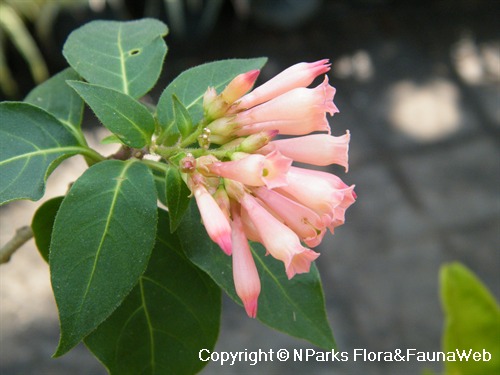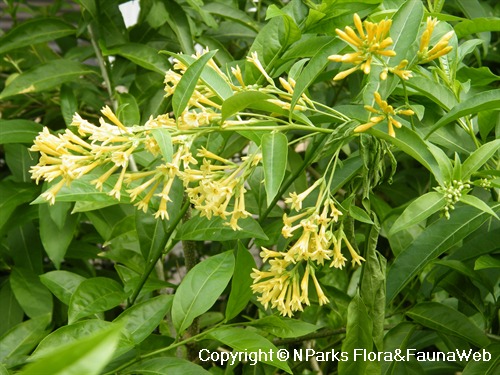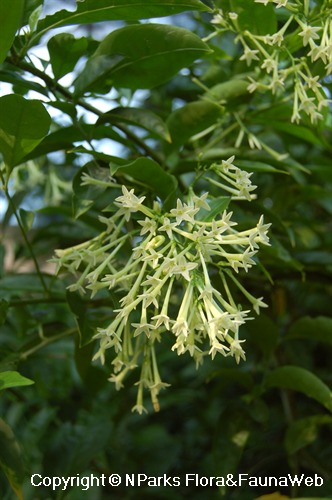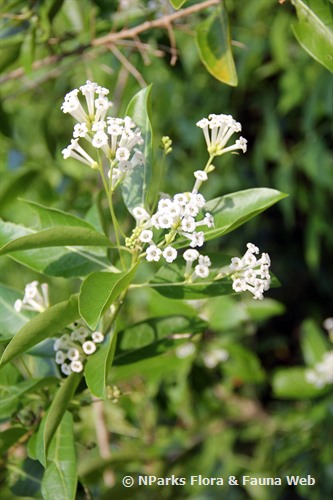
Name
Classifications and Characteristics
| Plant Division | Angiosperms (Flowering Seed Plants) (Dicotyledon) |
|---|---|
| Plant Growth Form | Shrub |
Description and Ethnobotany
| Growth Form | Climbing shrub up to 3 m tall. |
|---|---|
| Foliage | Ovate to elliptic leaves are about 8 cm long and 3 cm wide. |
| Stems | Stems are densely covered in hairs. |
| Flowers | Pink, tubular flowers have small triangular lobes that form a star-shaped pattern. They are arranged in clusters at the branch tips. |
| Fruit | Dark pink to red, round berries are 0.8-1.3 cm wide and contain about 8 seeds. |
| Taxonomy | The Plant List (www.theplantlist.org) states that Cestrum elegans var. smithii is a synonym of C. elegans, according to the World Checklist of Selected Plants (in review). |
| Cultivation | It can be trained to grow flat against a wall or trellis through a technique known as espaliering. |
Landscaping Features
| Desirable Plant Features | Ornamental Flowers |
|---|---|
| Landscape Uses | Trellis / Arbour / Pergola |
Plant Care and Propagation
| Light Preference | Full Sun, Semi-Shade |
|---|---|
| Water Preference | Moderate Water |
Foliar
| Mature Foliage Colour(s) | Green |
|---|---|
| Foliar Type | Simple / Unifoliate |
| Foliar Arrangement Along Stem | Alternate |
| Foliar Attachment to Stem | Petiolate |
| Foliar Shape(s) | Non-Palm Foliage (Ovate, Elliptical) |
| Foliar Venation | Pinnate / Net |
| Foliar Margin | Entire |
| Foliar Apex - Tip | Acute, Acuminate |
| Foliar Base | Rounded / Obtuse |
Floral (Angiosperm)
| Flower & Plant Sexuality | Bisexual Flowers |
| Flower Colour(s) | Pink |
|---|---|
| Flower Texture(s) | Smooth |
| Flower Grouping | Cluster / Inflorescence |
| Flower Location | Terminal |
| Flower Symmetry | Radial |
| Individual Flower Shape | Tubular |
Fruit, Seed and Spore
| Mature Fruit Colour(s) | Pink, Red |
|---|---|
| Fruit Classification | Simple Fruit |
| Fruit Type | Fleshy Fruit , Non-Accessory Fruit |
Image Repository
Others
| Master ID | 29493 |
|---|---|
| Species ID | 3802 |
| Flora Disclaimer | The information in this website has been compiled from reliable sources, such as reference works on medicinal plants. It is not a substitute for medical advice or treatment and NParks does not purport to provide any medical advice. Readers should always consult his/her physician before using or consuming a plant for medicinal purposes. |




